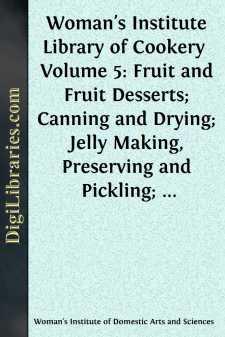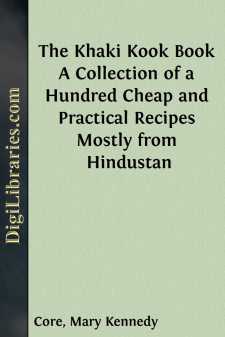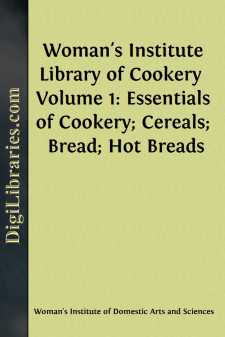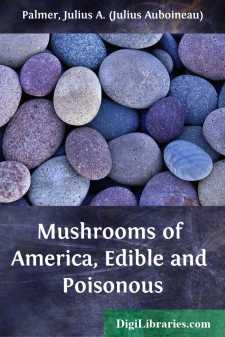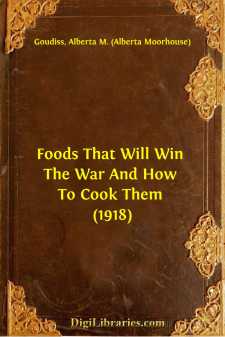Cooking
- General
- History 1
- Reference 10
- Regional & Ethnic 3
- Vegetarian 10
General Books
Sort by:
by:
Catherine Owen
INTRODUCTION. By choice cookery is meant exactly what the words imply. There will be no attempt to teach family or inexpensive cooking, those branches of domestic economy having been so excellently treated by capable hands already. It may be said en passant, however, that even choice cooking is not necessarily expensive. Many dishes cost little for the materials, but owe their daintiness and...
more...
by:
Richard Bradley
The Reason which induces me to address the following Piece to the Fair Sex, is, because the principal Matters contained in it are within the Liberty of their Province. The Art of Oeconomy is divided, as Xenophon tells us, between the Men and the Women; the Men have the most dangerous and laborious Share of it in the Fields, and without doors, and the Women have the Care and Management of every Business...
more...
PRELIMINARY OBSERVATIONS. Of all the frauds practised by mercenary dealers, there is none more reprehensible, and at the same time more prevalent, than the sophistication of the various articles of food. This unprincipled and nefarious practice, increasing in degree as it has been found difficult of detection, is now applied to almost every commodity which can be classed among either the necessaries or...
more...
FRUIT IN THE DIET 1. FRUIT, as is generally understood, is the fleshy, juicy product of some plant or tree which, when ripe, is suitable for use as food. Although some fruits are seedless, they generally contain the seeds of the plants or trees that produce them. Many fruits require cooking to make them palatable, others are never cooked, and still others may be cooked or eaten raw, as desired. Fruits,...
more...
About ten years ago the idea of writing a little cook book had its birth. We were in Almora that summer. Almora is a station far up in the Himalayas, a clean little bazaar nestles at the foot of enclosing mountains. Dotting the deodar-covered slopes of these mountains are the picturesque bungalows of the European residents, while towering above and over all are the glistening peaks of the eternal...
more...
THE PROBLEM OF FOOD 1. Without doubt, the greatest problem confronting the human race is that of food. In order to exist, every person must eat; but eating simply to keep life in the body is not enough. Aside from this, the body must be supplied with an ample amount of energy to carry on each day's work, as well as with the material needed for its growth, repair, and working power. To meet these...
more...
These charts are prepared for popular use, rather than for students of botanical science; all technical terms are, therefore, as far as possible, avoided. The names "mushroom" and "toadstool" are indefinite, are both applied with equal reason to any fleshy fungus, and are here used as synonymes, like the corresponding term "plant" and "vegetable," or "shrub" and...
more...
by:
Mildred Maddocks
FOREWORD The manufacture of home devices to be used by women in household work is of comparatively recent development, the growth of the industry has been so rapid that many manufacturers are still groping to establish standards that will meet the new and uncertain conditions under which their product must be used. Dealers in household equipment as well as manufacturers are still uncertain as to what...
more...
SAVE WHEAT Reasons Why Our Government Asks Us to Save Wheat, with Practical Recipes for the Use of Other Grains A slice of bread seems an unimportant thing. Yet one good-sized slice of bread weighs an ounce. It contains almost three-fourths of an ounce of flour. If every one of the country's 20,000,000 homes wastes on the average only one such slice of bread a day, the country is throwing away...
more...
by:
Juliet Corson
The wide publicity which the press in different sections of the country has given to my offer to show workingpeople earning a dollar and a half, or less, per day, how to get a good dinner for fifteen cents, has brought me a great many letters from those who earn more, and can consequently afford a more extended diet. In response to their requirements I have written this book, which I hope will be found...
more...





